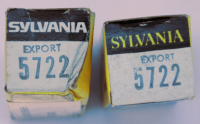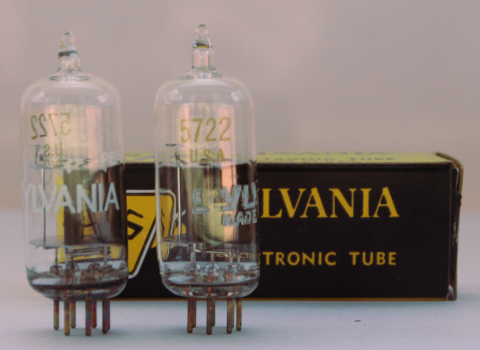Part 1: Rare Beauties
Lots of Noise (Un-) Wanted

For already quite some time building a noise generator for audio measurement use was one of my goals in audio engineering. The idea might seem pretty obsolete, as such generators are commonplace and rather cheap to buy. Open source as well as commercial software for generating white or pink noise within the audio band exists (BTW: for high quality open source audio software check out Fons Adriaensen’s Linux Audio Pages, a must for anyone doing audio work under Linux), so why on earth would someone want to build a noise generator? Why not just use the one included in my brand new arbitrary waveform generator?
The answer is, as often, because I simply want learn and understand matters. And building equipment yourself is the perfect way to do so. Therefore the DIY approach was what I aimed for.
How to Generate Noise
There are several ways to build noise generators. Digital concepts as well as analogue circuits. Putting the former aside (leaving room for yet another series of blog posts), the latter usually are based on the inevitable noise all electronic devices generate to some extent. Noise that is usually considered a problem when designing all kinds of electronic equipment. And a lot of ingenuity has been used within decades to minimize it.
Basically minimizing noise means to use low-noise components and to optimize their operating conditions. E.g. in the case of vacuum tubes (particularly triodes) this might mean to set the optimal quiescent current, depending on their mutual conductance (a function of anode current) and their noise corner frequency. This will be dealt with in detail in an upcoming post about low noise design of an tube RIAA input stage. But if low-noise design is possible, the same mechanisms can of course be used to maximize noise, either by designing components that already produce a huge amount of noise or by setting oprating conditions appropriately.
A nice example for a well designed analogue noise generator can be found in Self [1], using a BJT base-emitter junction as a zener diode (i.e. by increasing the junction reverse voltage until breakthrough, approx. 6 to 7 Volts). The resulting white noise is then amplified in 2 Opamp stages and finally low-pass filtered in a pinkening filter (more on different colors of noise in one of the upcoming parts of this mini series).
The Retro Alternative: (Vacuum) Noise Diodes
For quite some time (vacuum) noise diodes were a common source of (white) noise, generating broad band noise for testing radio and TV circuits. One of the best-known noise diodes was the 5722 made by Sylvania (datasheet).
Noise generation in noise diodes is based on random fluctuations in DC current (could also be interpreted as the effect of quantized charge transport) in a saturated emission vacuum diode, it therefore is basically Shot Noise. Though, realiter things are not that simple, unfortunately this is not the only sort of noise generated in a vacuum tube and (as will be shown in the next part of this series) this limits the noise generator’s usability at the lower end of the audio spectrum. A nice comparison of different noise diodes can be found here, though the author mainly focussed on HF properties of the tubes examined.
And there’s yet another problem (clearly stated in the 5722’s datasheet): The tube’s lifetime (particularly the heater’s, resp. the cathode’s lifetime - remember, it’s operated in saturation, drawing the highest cathode current possible) is quite limited, highly depending on the heater voltage applied (that subsequently controls the amplitude of the noise generated). Fortunately there are ways to improve the tube’s lifetime. More on that in a future post on the noise generator’s practical implementation.
So Why Use a (Vacuum) Noise Diode?

Again, there’s not a single, simple answer for that. Remember: difficult problems have easy, simple to understand wrong answers… It’s partly my obsession for vacuum tubes in audio, but much more it’s an almost perfect possibility to experiment with the noise generated in vacuum tubes, mainly to develop the optimum strategies in developing lowest-noise tube audio circuits.

Therefore the ability to buy 2 of the rare 5722s NOS (new old stock - unused), one (the very last one on stock) from my favourite vacuum tube vendor BTB, a second one (as spare part) on eBay, the plan to build a tube based noise generator took form.